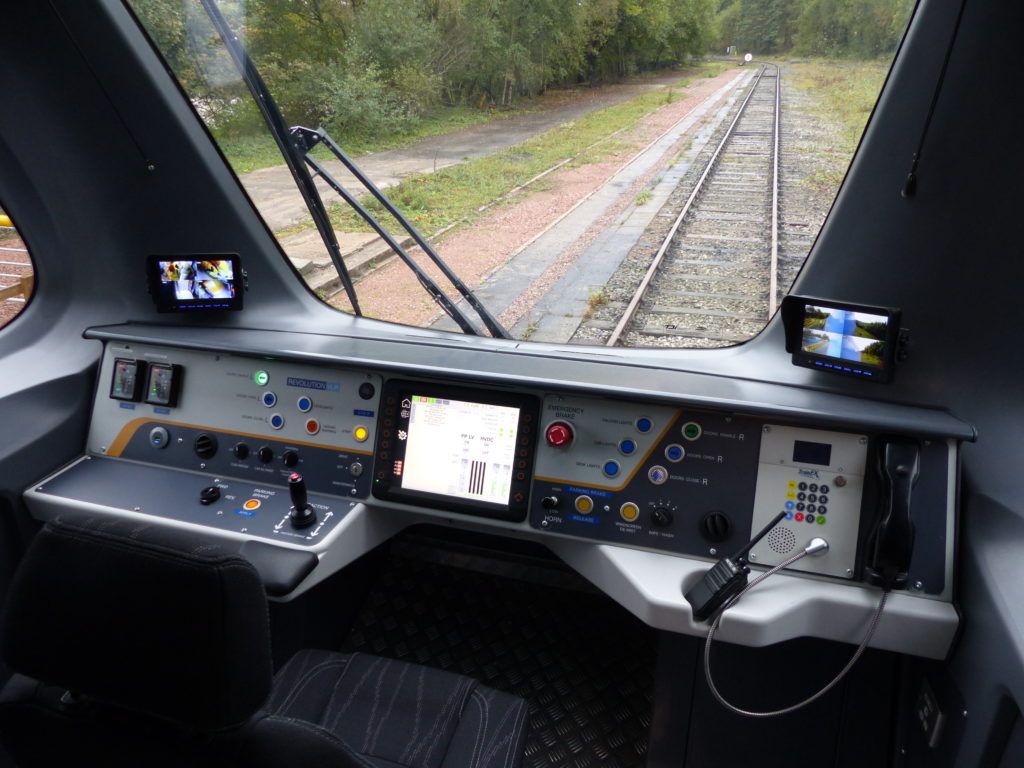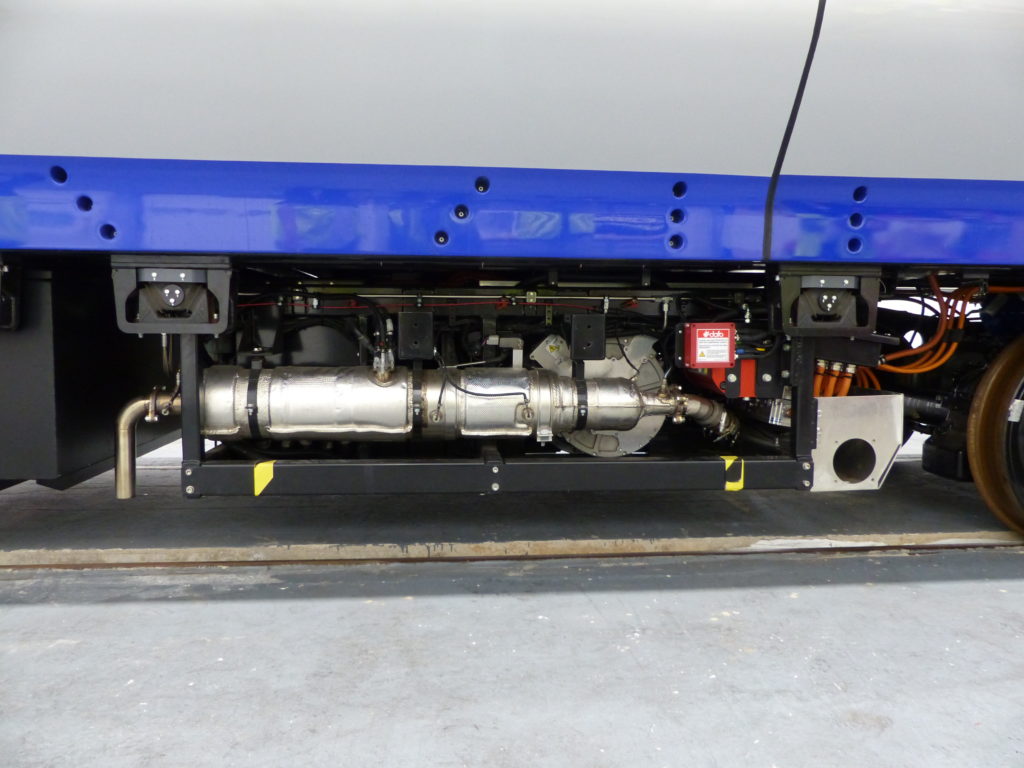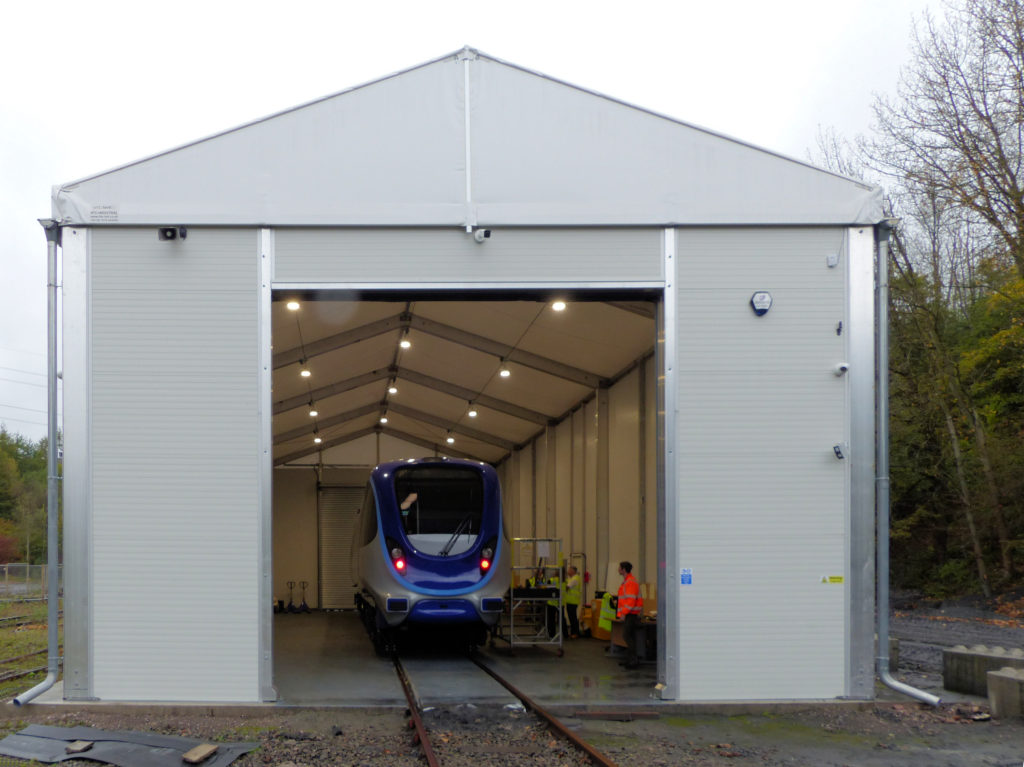If you’ve not been following what’s been happening in the world of very light rail (VLR) it is easy to get confused. In Issue 191 (July/Aug 2021), David Shirres described, among other things, the establishment of a VLR National Innovation Centre (VLRNIC) at Dudley and the cost/disruption challenge when constructing light rail track. In issue 188 (Jan/Feb 2021), Clive Kessell and I covered a Railway Industry Association event dedicated to light rail covering a wide range of issues. All these were aimed largely at the urban/suburban market.
There is another market, however. Many, mainly rural, groups have been trying to get their local rail links restored and they’re assisted by the Restoring Your Railway Fund managed by the Department for Transport (DfT). Across the globe people are thinking about how to reduce their dependence on the car. There is a generally held view that car drivers will not be encouraged out of their cars onto buses but are much more likely to do so for a high-quality rail product.
This has led to much thinking about what sort of vehicle might operate such restored routes. If asked today, the default option would be a 1980s single-car, diesel-powered train such as the UK’s class 153. These are not attractive vehicles. Their passenger accommodation is cramped and for the drivers it is worse, resulting in the unattractive nickname ‘dogbox’. The vehicle tends to be the public face of the railway, but a class 153 is not what even its designer would call a pretty one. Enter Revolution VLR (Revolution Very Light Rail or RVLR).
Background
Rolling back a few years, the 2012 Railway Technical Strategy led to a competition called ‘Radical Train’ which was aimed at producing technology demonstrators; real things that people could see and touch which would be inspirational and show the way ahead for the industry. Your author, before ‘retirement’, was a member of a panel of judges assessing aspects of the short-listed entries.
One of these was from a consortium of companies that was proposing a very light self-powered train. In November 2013, they won a modest award from the RSSB Future Railway Enabling Innovation Team funded by the DfT, which led to further funding to develop a self-powered bogie with an integral, hybrid propulsion system and kinetic energy recovery system.
In May 2018, Eversholt Rail, one of the UK’s rolling stock owners, announced it had joined the RVLR consortium and programme, the industry consortium that will develop, manufacture and market the RVLR vehicle.

Today
In October 2021, Rail Engineer met with the RVLR team on the site of a former power station in Ironbridge, near Telford in Shropshire. It soon became clear that the exercise is more than just developing the vehicle. The RVLR has been created by a consortium led by Transport Design International Ltd (TDI) with Eversholt Rail, WMG at the University of Warwick, Cummins diesel engines, Transcal, RDM Group, and Prose (Switzerland) with support from DfT and RSSB.
The objective of RVLR is to deliver a reliable, high quality passenger experience at the lowest possible cost of system implementation and operation. It has to encourage modal shift and be technically and economically sustainable, not just ‘cheap as chips’. With similar arguments to those advanced for the urban VLR concepts, the aim is for a low-cost railway system using a lightweight vehicle to minimise track wear and enable cost-effective infrastructure. The aim is to adopt appropriate systems using a modular construction technique that is both lighter and more adaptable than traditional rolling stock.
Vehicle design
The key to attracting car users is a good-looking vehicle that is easy to access and comfortable inside. One only has to see and then step inside the RVLR to see that these objectives have been delivered. The front-end design features a large windscreen with a very clear view for the driver who also has a comfortable seat. Drivers of class 153s will be envious. A good view out was seen as essential as some line-of-sight driving might be involved.
The 18.5-metre-long vehicle has been laid out with 56 seats and a wheelchair space. It complies with the requirements of the PRM TSI accessibility specification. Power and USB sockets have been provided and there is full air conditioning. Eight seats are in bay layout with tables, and the remainder are airline style with a 770mm pitch. Unusually in today’s trains, the seats had a reasonable amount of padding and were comfortable, although the journey was short.
The cab is laid out with all the controls in appropriate locations established through ergonomic studies and consultation with train drivers. The photo shows the clean console design with CCTV monitors either side displaying the views from the interior and exterior (front, rear and sides) cameras.

Construction
RVLR is constructed on a steel underframe, with aluminium/Kevlar reinforced vehicle ends and roof. The bodysides are double skinned composite (recycled carbon fibre) elements pre-wired, that are bonded and bolted to the underframe. Windows are bonded to the bodyside units and their trapezium shape is a result of seeking the maximum window size allowed by the structural design of the bodyside elements. The doors are a sliding plug design to EN 14752.
Bogies are based on the Wabtec LN25 low noise freight bogie. That said, it has been modified to become a power bogie, has rubber secondary and coil spring primary suspension and has yaw dampers. RVLR is currently designed for a 65mph (104km/h) top speed. The overall tare weight is 24.8 tonnes, a 40% reduction compared with class 153. RVLR personnel explained that the freight bogie is proven on often indifferent quality track which might be a feature of the target lines, and whilst comprising roughly one third of the tare mass, this proven design significantly de-risks the project.
Reducing weight
Weight saving techniques have been applied. The wheels are much smaller than would normally be used on a freight bogie and are mounted on hollow axles. The hollow axles each deliver a mass saving of 130kg each. The four traction motors are possibly the smallest your writer has ever seen on a train. They are permanent magnet three-phase motors and each one is mounted on the bogie parallel to, and driving the axle mounted gearbox though a carbon fibre shaft. Braking is mainly regenerative, but disc brakes are provided at the motor ends of the carbon fibre shafts for emergencies and parking.

The motors are fed from three phase inverters powered by two banks of Toshiba Lithium Titanate batteries with a total capacity of 62kWh. On this version, the batteries are kept charged by twin Cummins 2.8l diesel engines that conform to Euro 6 (road use) regulations with particulate filters and selective catalytic reduction using AdBlue. During the demonstration the diesel engines did not run. The team reported that it is intended that the diesel engines would be automatically stopped at stations and in other sensitive areas, and would always run at their most efficient speed. Again, depending on the duty, larger batteries could be fitted with charging stations at appropriate points on the route, something that would be selected as part of the system design. A battery-only version is expected to be lighter.
The vehicle has been designed for ease of maintenance without the need for bespoke facilities and equipment, and any of the underframe modules can be exchanged in about 20 minutes using ordinary tools and a forklift.
System design
The choice of Ironbridge for the demonstration was made to illustrate how quickly a redundant railway could be brought back into use. The old Ironbridge Power Station was connected to the Birmingham to Shrewsbury line between Ironbridge and Shifnal. Development company Harworth purchased the site and has recently gained planning permission for constructing 1000 homes and associated communal facilities. Large development companies repurposing old industrial sites are often required to provide public transport facilities of some kind, and they have co-operated with RVLR to set up the test site to illustrate the possibility of a rail based public transport solution.
The track – mainly bullhead rail on timber sleepers – was in reasonable condition. It was fettled, and the workshop, visitor centre, platform and derailer were all constructed in six months at a cost of less than £400,000.
While the platform and buildings are temporary structures, with only a little more work (e.g., platform lighting) they would suffice to start a service. Indeed, the visitor centre was of better quality than the shelters seen on many mainline stations. When a rural line has delivered or exceeded its ridership targets, then perhaps more permanent facilities will be provided.

Assurance
While the RVLR is designed to meet the requirements for its intended duty, there are numerous non-compliances with the standards currently in place for heavy rail operation.
The RVLR team has been working closely with RSSB to agree where non-compliances are appropriate and what mitigations might be required for mixed traffic operation. Using structural strength and crashworthiness as an example, the requirements of GMRT2100, EN12663 and EN 15227 have been evaluated and, without getting into the technical detail, the vehicle conforms to requirements for trams/light metro vehicles.
The vehicle meets the requirements for level crossing collisions, but the requirement for train-to-train collision, say, RVLR to freight train, will be managed by separation. Operation into bay platforms at interchange stations is an example of separation. Provision is made for an obstacle deflector, but it is not currently fitted.
The RVLR team said that ETCS, AWS, TPWS, sanding and other equipment can be fitted as required by the nature of the operation. ORR have been involved throughout. This is an example of progressive assurance, where early assurance can be provided that the requirement set is valid, followed by assurance evidence being provided hand-in-hand with project design and delivery.
Costs and deployment
In restoring any railway, the cost of the vehicles is a small component of the whole. The costliest part is usually building or reinstating the infrastructure. If adopting RVLR can deliver a reduction in overall project cost – even 10% – it will be worthwhile, but it will require a mindset change. The question “what do I need to do to provide a safe, reliable, attractive and low-cost railway and how can the standards help me achieve that ambition?” must replace the statement “I have to build a railway and I must comply with every standard”.
For existing branch lines, RVLR brings a welcome uplift in quality and appearance. The promoters were reluctant to quote a price for a RVLR vehicle, a sum that depends on specification and order quantities, but they said that they are aiming for the cost to be nearer that of a modern 56-seater bus than the cost of a conventional heavy rail vehicle. Customers of branch lines, such as those at Gunnislake, Looe, and Tavistock, would see an immediate uplift in quality.

With thanks to the team demonstrating the Revolution VLR including Tim Burleigh and Wendy Allington from Eversholt Rail, and Len Islef and Nicola Islef from Transport Design International.

